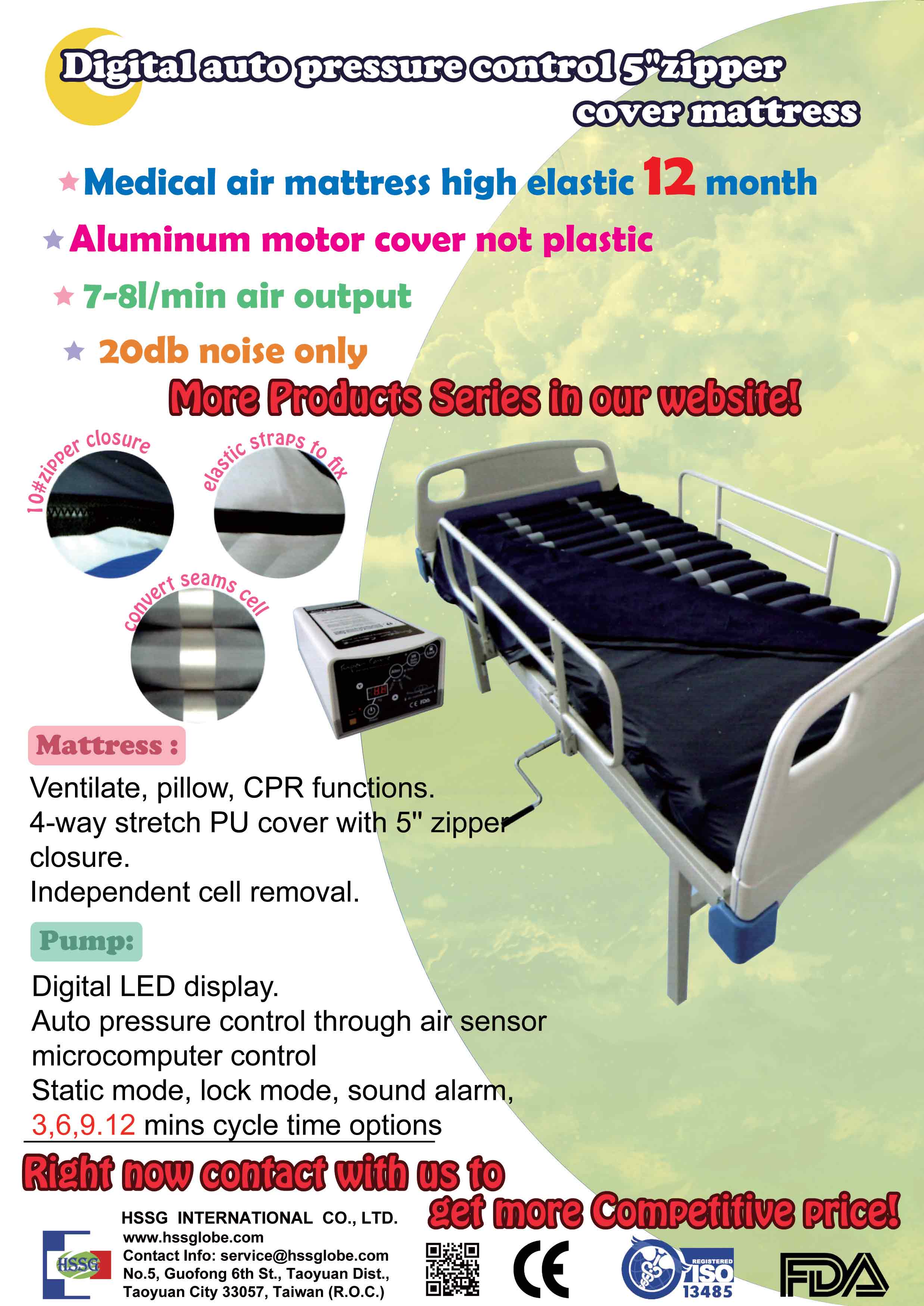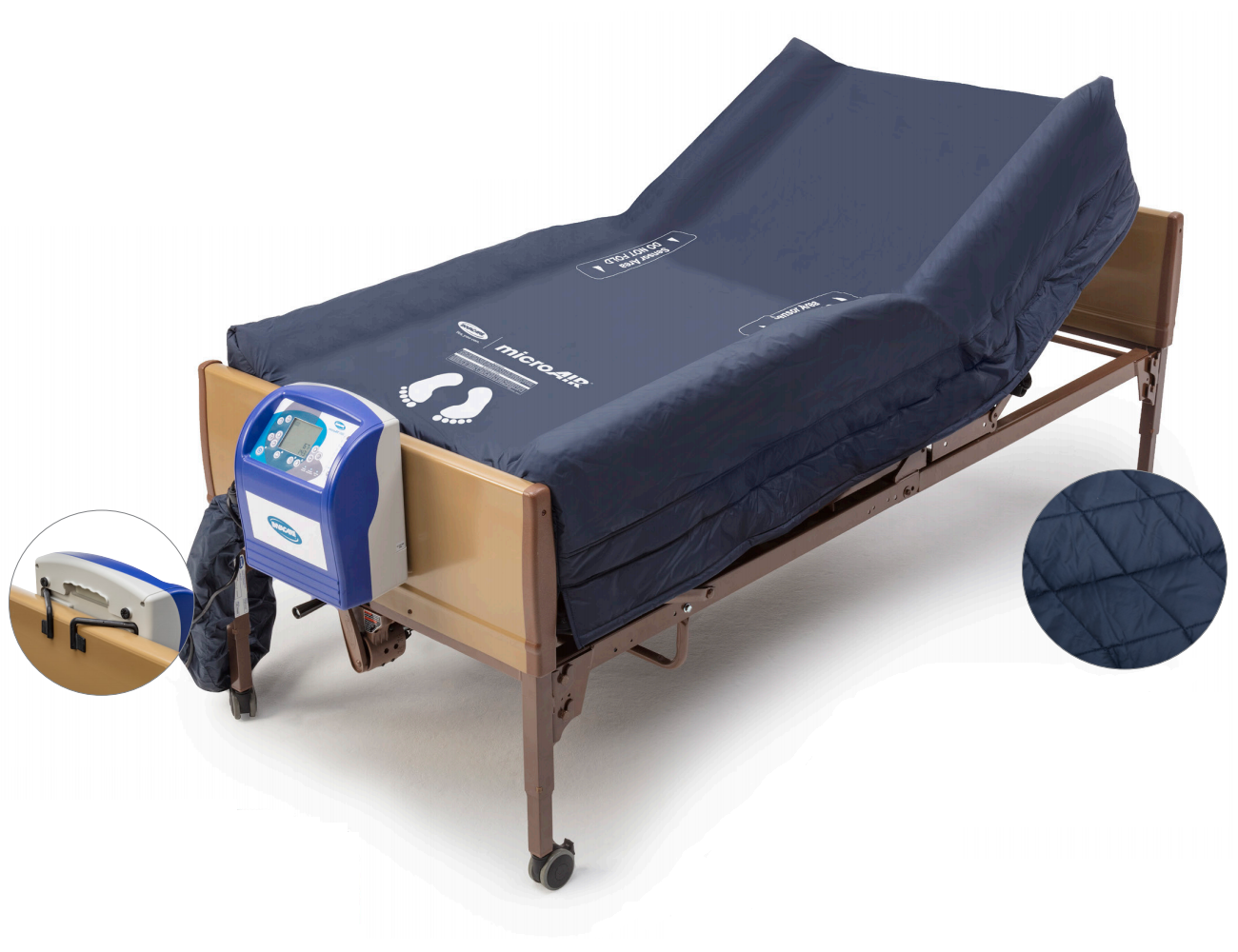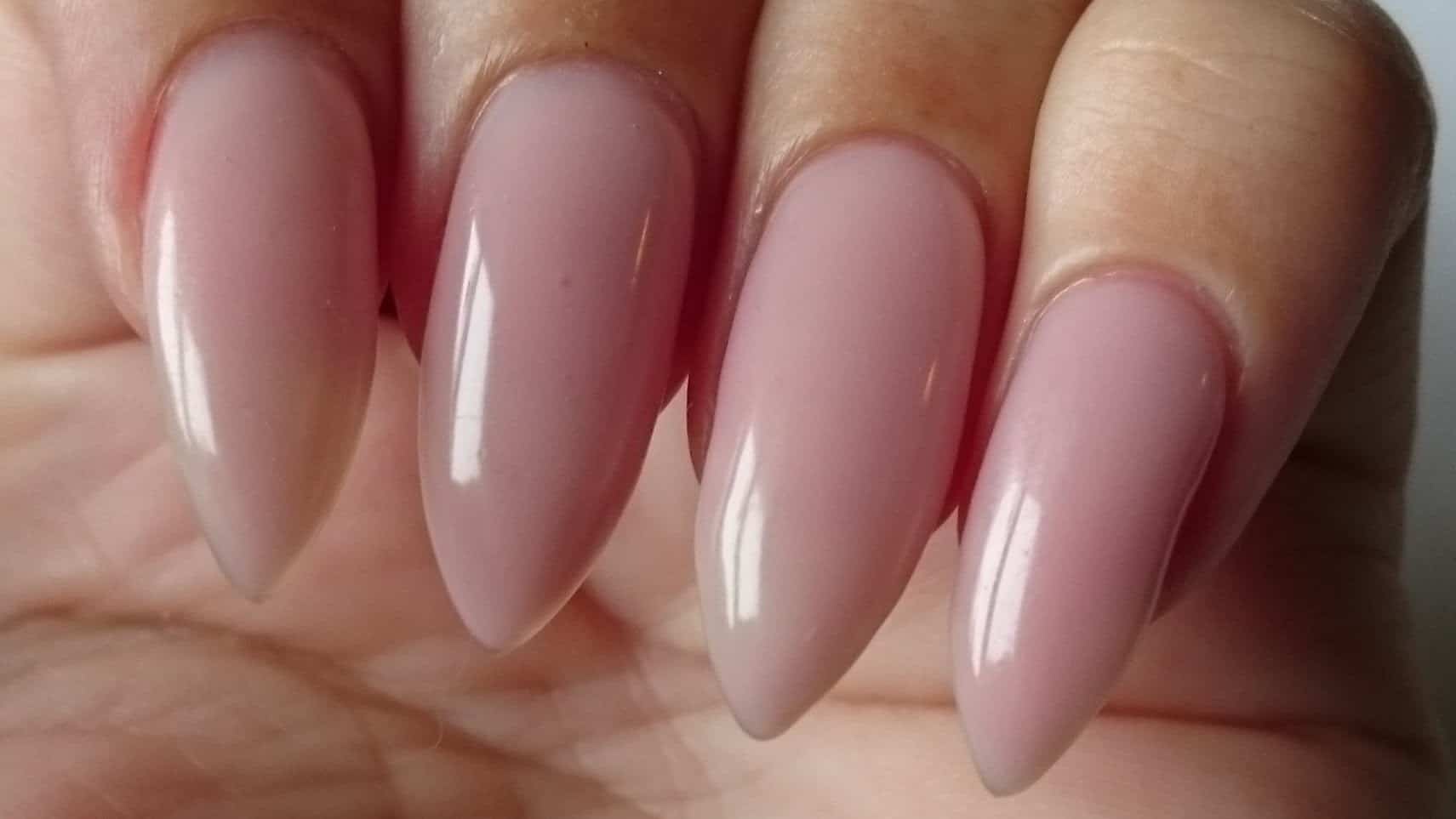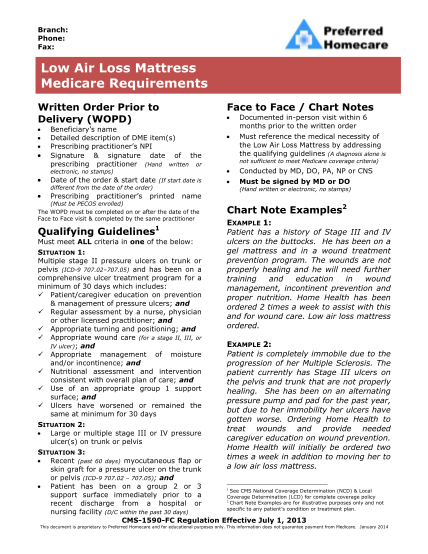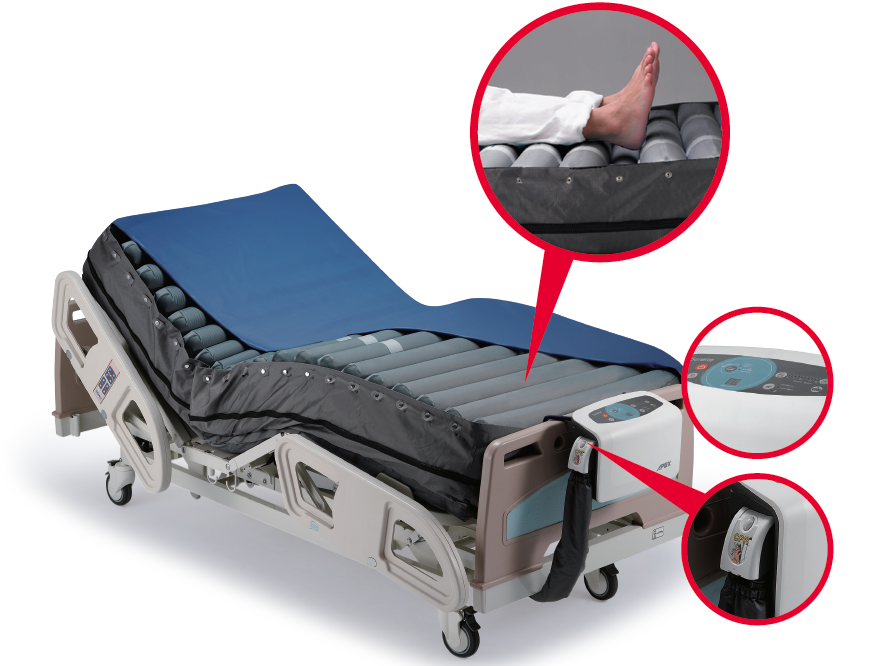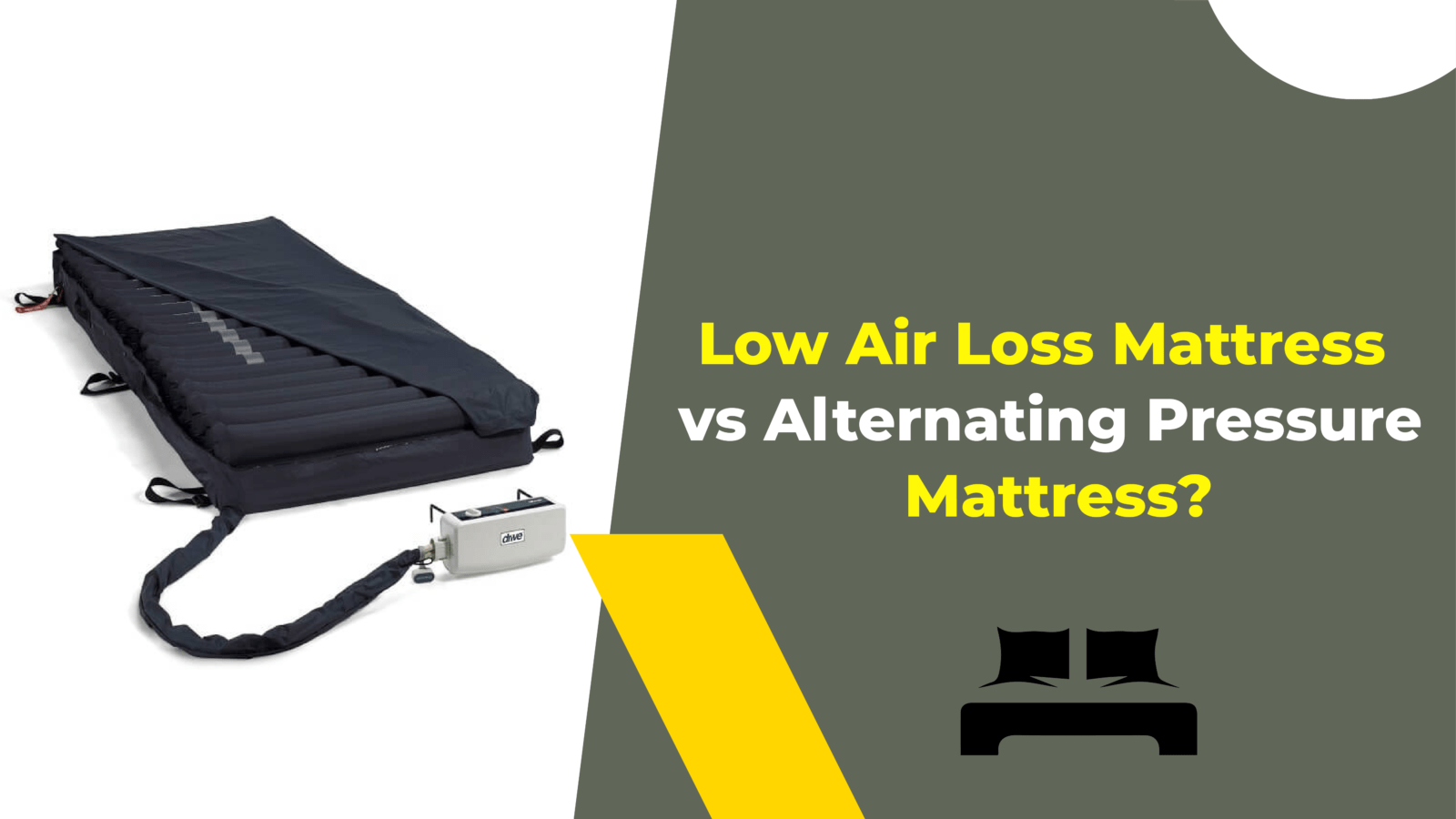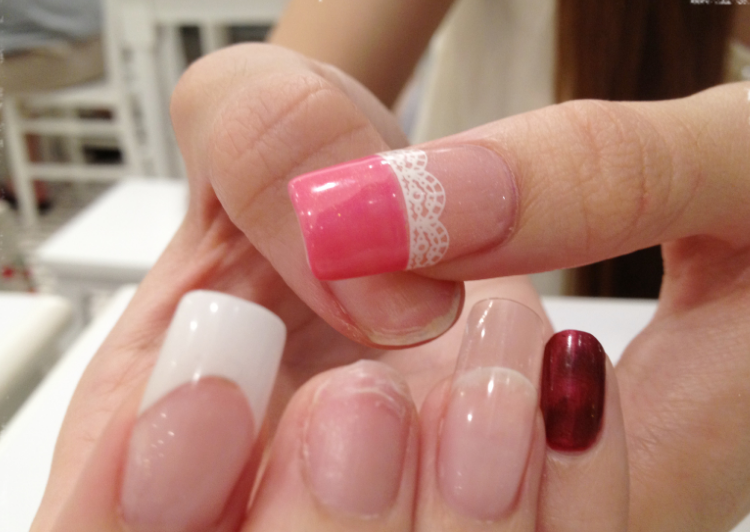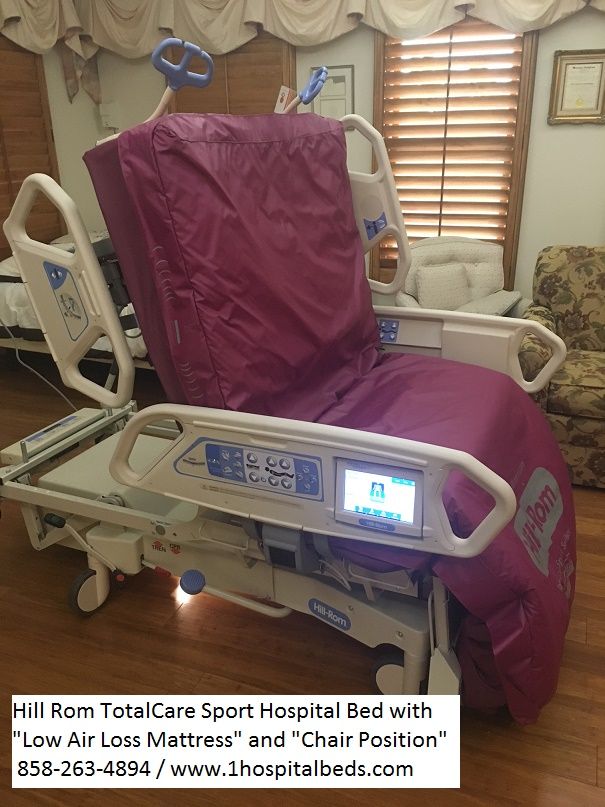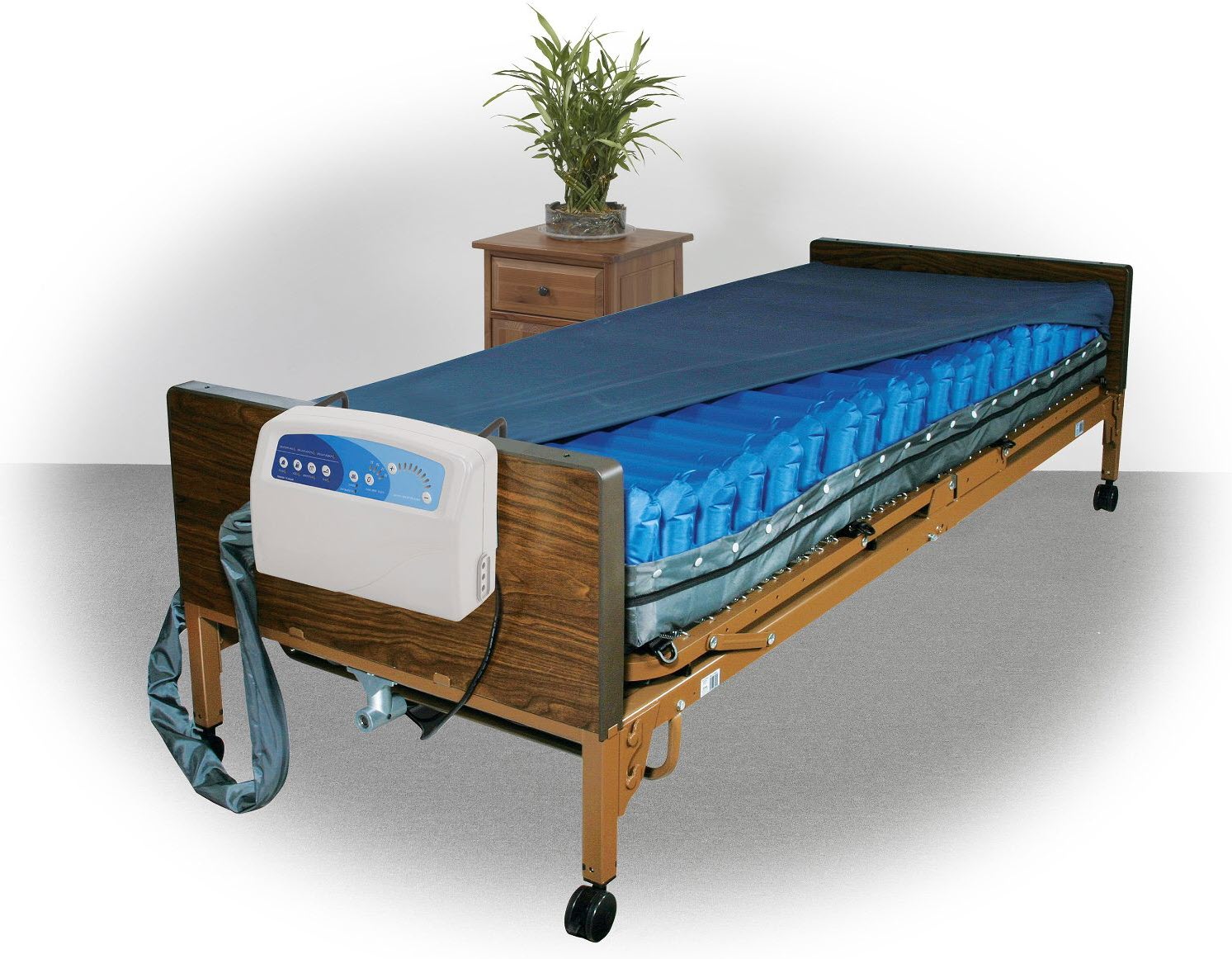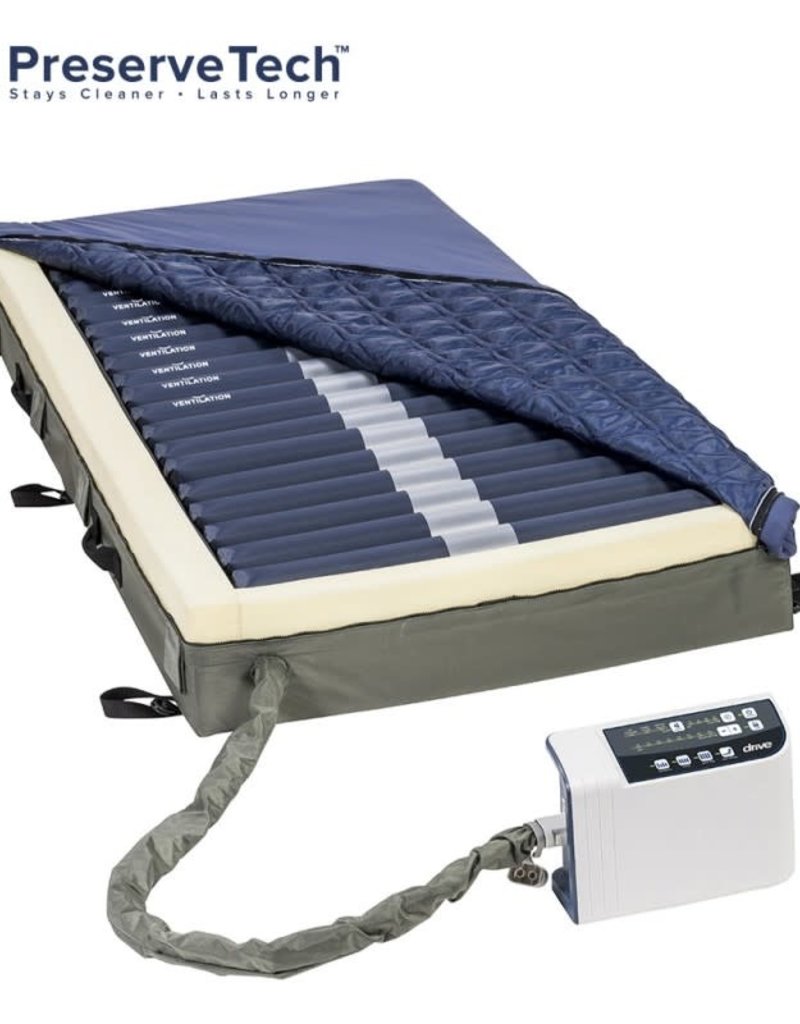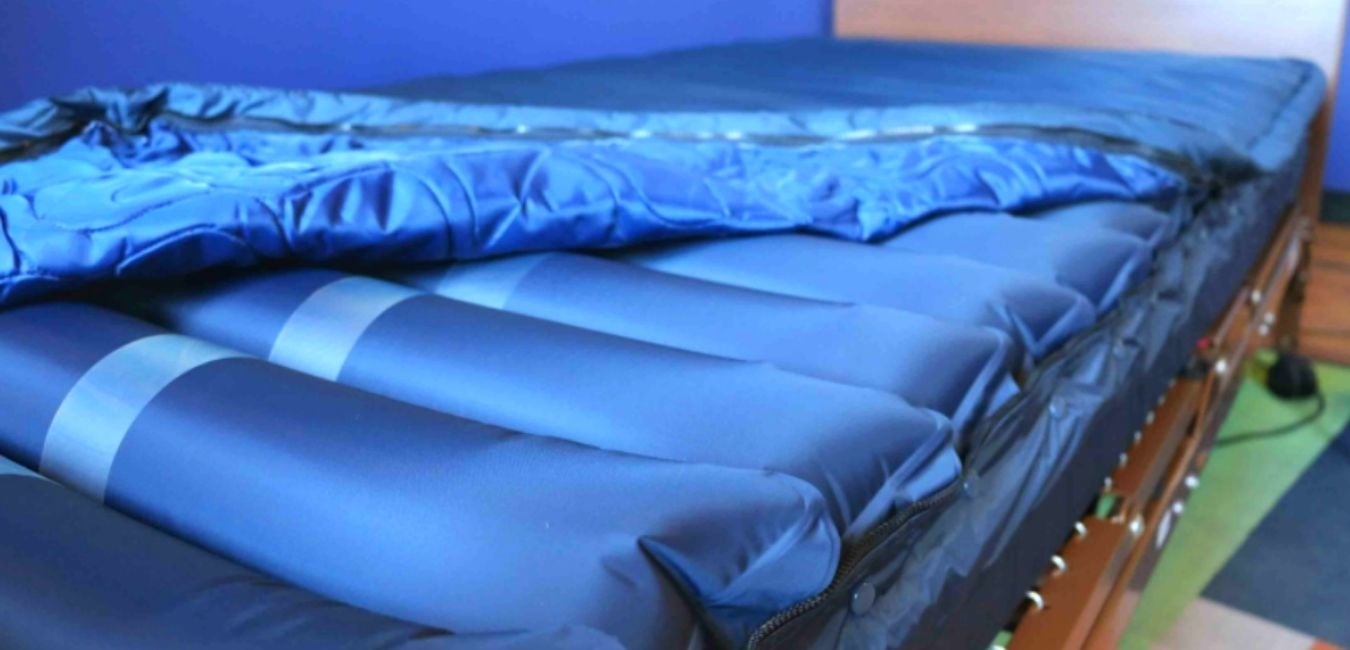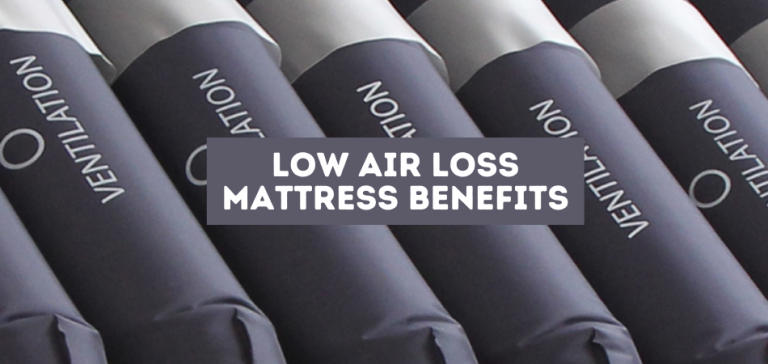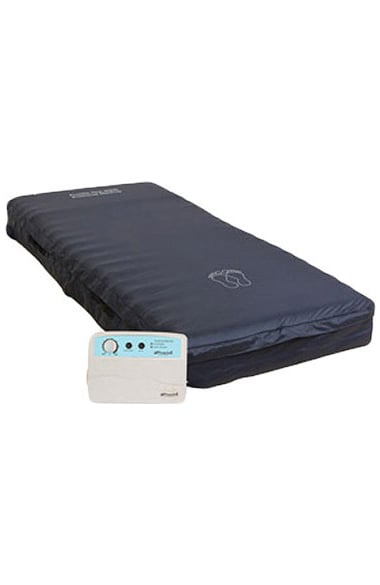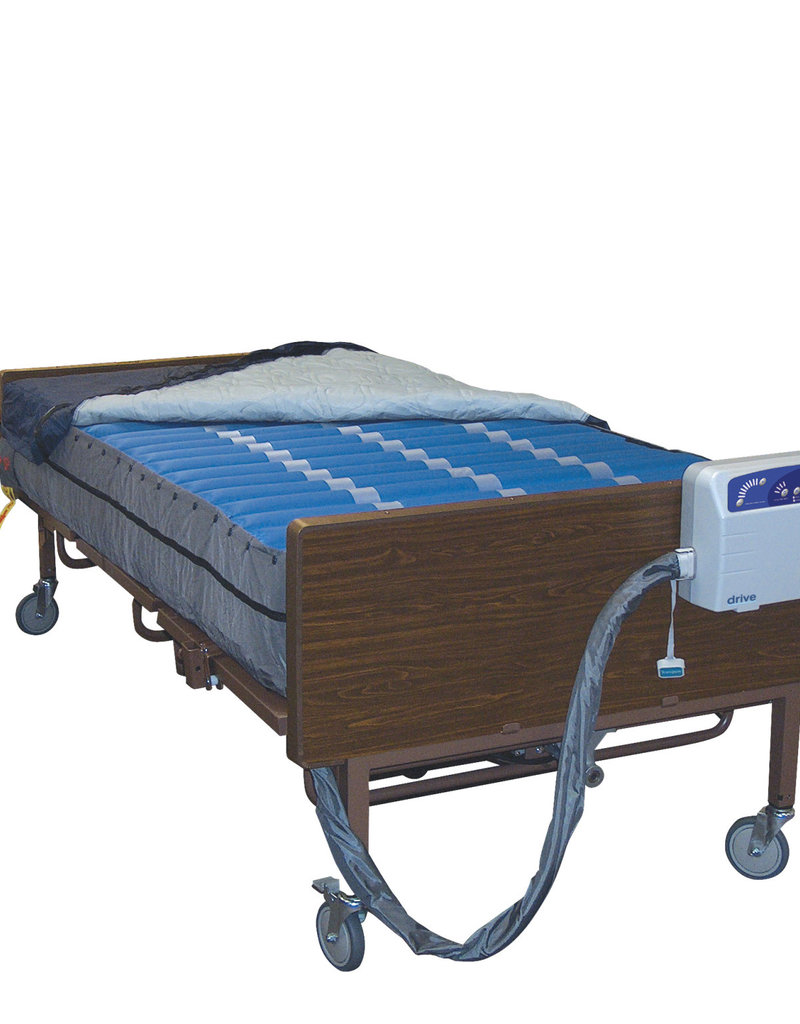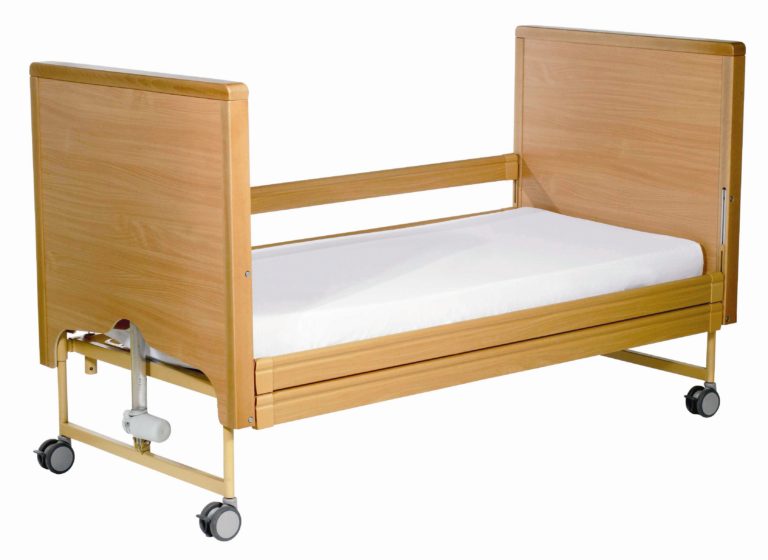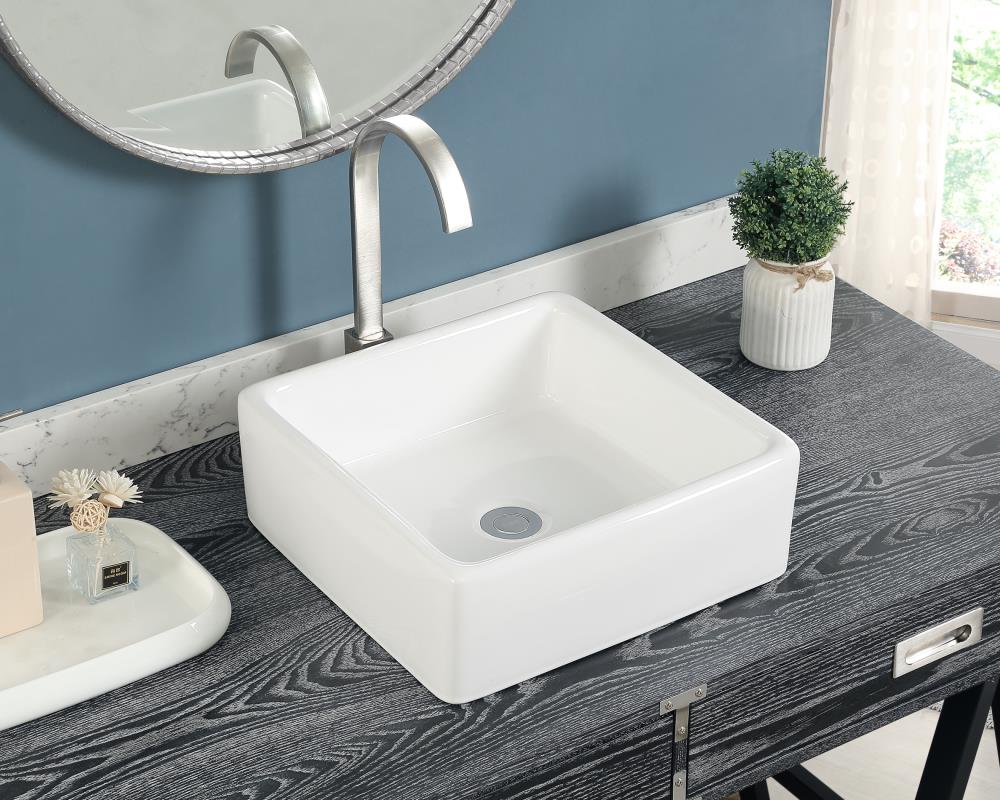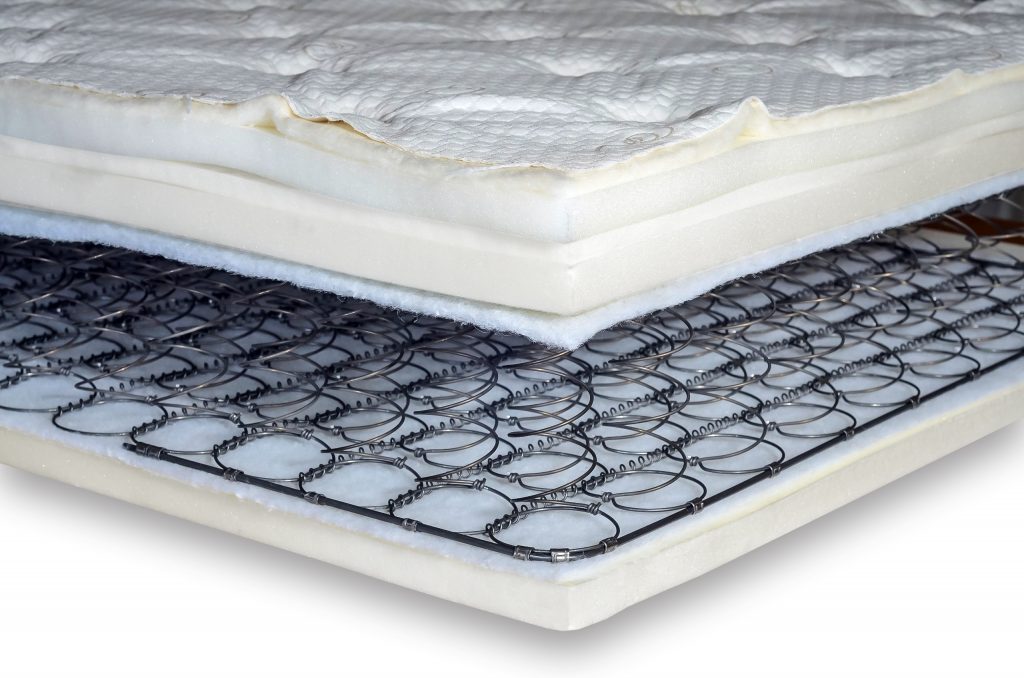A low air loss mattress is an advanced medical device designed to provide pressure relief and promote healing for patients with limited mobility. It is made up of a series of connected air cells that are filled and emptied with air, creating a gentle and continuous airflow. This helps to reduce the build-up of heat and moisture, which can lead to skin breakdown and pressure ulcers. Low air loss mattresses are commonly used in hospitals, long-term care facilities, and home care settings.Low Air Loss Mattress
A gel overlay is another type of pressure-relieving mattress that is made of a gel-like substance. It is placed on top of a regular mattress to provide additional comfort and support. The gel conforms to the body's shape, distributing weight evenly and reducing pressure points. Gel overlays are often used for patients with localized pressure injuries or for those who are at risk of developing them.Gel Overlay
Both low air loss mattresses and gel overlays are effective in relieving pressure and promoting healing. However, there are some key differences between the two that may make one more suitable for certain patients. Pressure Relief: Low air loss mattresses use a constant airflow to reduce pressure, while gel overlays use the gel's ability to conform to the body's shape. Both methods are effective, but low air loss mattresses may provide more consistent pressure relief. Heat and Moisture Control: Low air loss mattresses are designed to reduce heat and moisture build-up, which can lead to skin breakdown. Gel overlays do not have the same capabilities, so they may not be suitable for patients with excessive sweating or incontinence. Cost: Low air loss mattresses tend to be more expensive than gel overlays, as they are more technologically advanced. However, they may also have a longer lifespan and require less maintenance, making them a more cost-effective option in the long run.Comparison of Low Air Loss Mattress and Gel Overlay
A low air loss mattress offers numerous benefits for patients, including: Pressure Relief: The constant airflow creates a gentle and consistent pressure, reducing the risk of pressure ulcers and promoting healing for existing injuries. Heat and Moisture Control: The airflow helps to regulate temperature and control moisture, reducing the risk of skin breakdown and infections. Mobility Support: The air cells can be adjusted to provide different levels of support, making it suitable for patients with limited mobility or those who need to change positions frequently. Pain Relief: The even distribution of weight can help to alleviate pain and discomfort for patients with injuries or chronic conditions.Benefits of Low Air Loss Mattress
Gel overlays also offer several benefits for patients, including: Pressure Relief: The gel conforms to the body's shape, reducing pressure points and promoting healing for localized injuries. Comfort: The gel provides a soft and cushioned surface, making it more comfortable for patients to lie on for extended periods. Cost-Effective: Gel overlays are generally more affordable than low air loss mattresses, making them a more accessible option for patients on a budget. Easy to Maintain: Gel overlays do not require any special maintenance, and they can be easily cleaned with soap and water.Benefits of Gel Overlay
Low air loss mattresses may come with a variety of features, including: Adjustable Air Cells: The air cells can be adjusted to provide different levels of support and pressure relief. Alternating Pressure: Some low air loss mattresses have the ability to alternate the pressure in different air cells, promoting blood circulation and reducing the risk of pressure ulcers. Control Unit: The control unit allows caregivers to adjust the settings and monitor the pressure levels. Waterproof Cover: The mattress may come with a waterproof cover to protect against spills and moisture.Features of Low Air Loss Mattress
Gel overlays may have the following features: Thickness: Gel overlays come in various thicknesses to provide different levels of support. Contoured Design: Some gel overlays have a contoured design to provide additional support and pressure relief for specific body parts. Non-Slip Bottom: The bottom of the gel overlay may have a non-slip material to prevent it from shifting on top of the mattress. Removable Cover: Some gel overlays come with a removable cover for easy cleaning and maintenance.Features of Gel Overlay
The cost of a low air loss mattress can range from a few hundred dollars to several thousand, depending on the features and brand. Gel overlays are generally more affordable, with prices ranging from $50 to $200. While gel overlays may seem like a more cost-effective option, it's important to consider the long-term costs and benefits. Low air loss mattresses may have a higher upfront cost, but they may also have a longer lifespan and require less maintenance, making them a more cost-effective option in the long run.Cost Comparison: Low Air Loss Mattress vs Gel Overlay
Customer reviews for both low air loss mattresses and gel overlays are generally positive, with many patients reporting significant improvements in pressure relief and comfort. However, some users have noted that low air loss mattresses can be noisy due to the constant airflow, which may be disruptive for some patients. On the other hand, gel overlays have been praised for their comfort and affordability, but some users have noted that they may not provide enough pressure relief for severe injuries or conditions.Customer Reviews: Low Air Loss Mattress vs Gel Overlay
Ultimately, the choice between a low air loss mattress and gel overlay will depend on the individual needs and preferences of the patient. Low air loss mattresses are more advanced and offer a wider range of features, making them suitable for patients with more severe injuries or conditions. However, gel overlays may be a more affordable and accessible option for those with milder injuries or on a budget.Which is Better: Low Air Loss Mattress or Gel Overlay?
The Main Differences Between Low Air Loss Mattresses and Gel Overlays

Introduction
 When it comes to choosing the right mattress for your home, there are many factors to consider. It's not just about finding something comfortable and supportive, but also about looking for features that can benefit your overall health and well-being. Two popular options in the market today are the
low air loss mattress
and the
gel overlay
. Both have their own unique features that make them stand out, but which one is the better choice? Let's take a closer look at the main differences between these two types of mattresses.
When it comes to choosing the right mattress for your home, there are many factors to consider. It's not just about finding something comfortable and supportive, but also about looking for features that can benefit your overall health and well-being. Two popular options in the market today are the
low air loss mattress
and the
gel overlay
. Both have their own unique features that make them stand out, but which one is the better choice? Let's take a closer look at the main differences between these two types of mattresses.
Construction
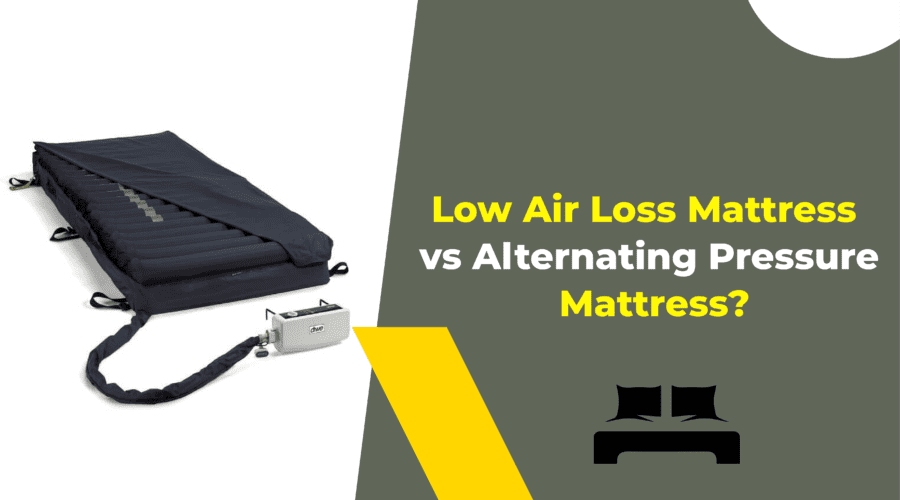 One of the main differences between
low air loss mattresses
and
gel overlays
is their construction. Low air loss mattresses are made up of multiple air cells that can be adjusted to provide different levels of pressure redistribution. This allows for a customizable and comfortable sleeping experience. On the other hand, gel overlays are made up of a layer of gel placed on top of a foam or air mattress. The gel provides a cooling effect and helps to distribute pressure evenly.
One of the main differences between
low air loss mattresses
and
gel overlays
is their construction. Low air loss mattresses are made up of multiple air cells that can be adjusted to provide different levels of pressure redistribution. This allows for a customizable and comfortable sleeping experience. On the other hand, gel overlays are made up of a layer of gel placed on top of a foam or air mattress. The gel provides a cooling effect and helps to distribute pressure evenly.
Pressure Redistribution
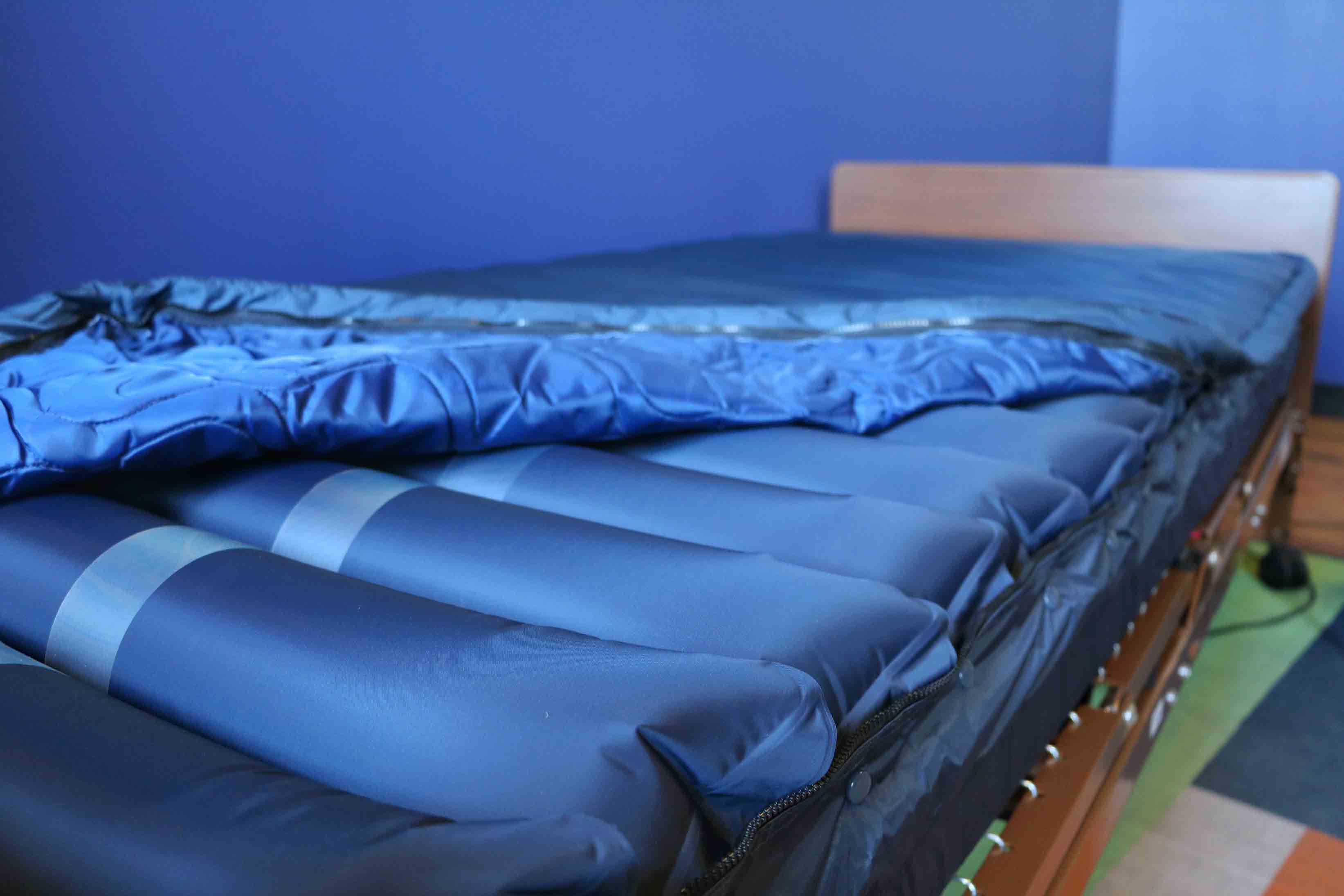 One of the key features of both low air loss mattresses and gel overlays is their ability to redistribute pressure. This is especially important for those who are bedridden or have limited mobility. Low air loss mattresses use air cells to distribute pressure evenly, reducing the risk of bedsores and promoting better circulation. Gel overlays, on the other hand, use the gel to conform to the body's shape, providing pressure relief and reducing the risk of pressure ulcers.
One of the key features of both low air loss mattresses and gel overlays is their ability to redistribute pressure. This is especially important for those who are bedridden or have limited mobility. Low air loss mattresses use air cells to distribute pressure evenly, reducing the risk of bedsores and promoting better circulation. Gel overlays, on the other hand, use the gel to conform to the body's shape, providing pressure relief and reducing the risk of pressure ulcers.
Moisture Management
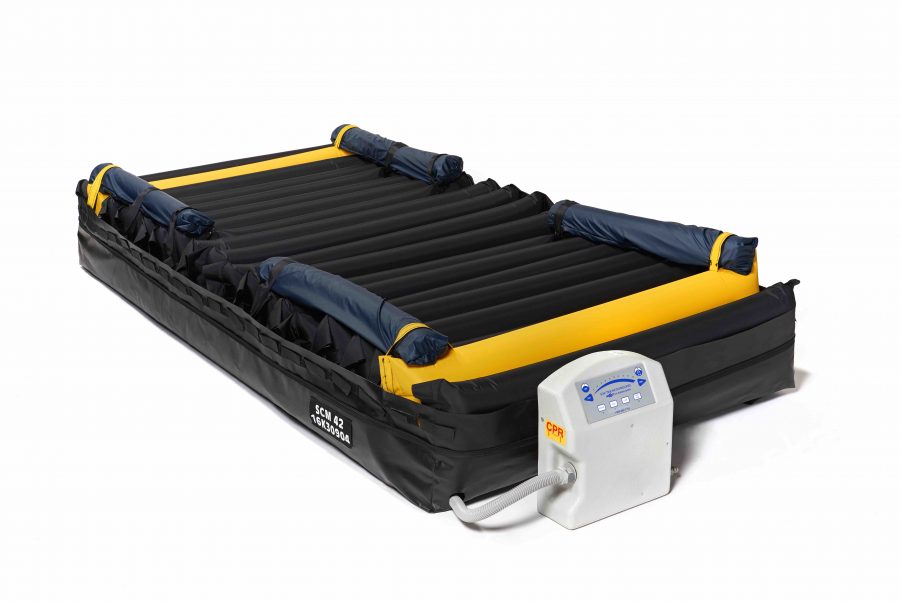 Another important factor to consider when choosing a mattress is moisture management. Low air loss mattresses have small holes in the air cells that allow for air circulation, helping to keep the skin dry and reduce the risk of skin breakdown. Gel overlays, on the other hand, have a cooling effect that can help to regulate body temperature and prevent sweating. This can be especially beneficial for those who tend to overheat while sleeping.
Another important factor to consider when choosing a mattress is moisture management. Low air loss mattresses have small holes in the air cells that allow for air circulation, helping to keep the skin dry and reduce the risk of skin breakdown. Gel overlays, on the other hand, have a cooling effect that can help to regulate body temperature and prevent sweating. This can be especially beneficial for those who tend to overheat while sleeping.
Cost
 Cost is often a deciding factor when it comes to purchasing a new mattress. Low air loss mattresses tend to be more expensive than gel overlays due to their advanced technology and construction. However, they also have a longer lifespan and may be a better investment in the long run. Gel overlays, on the other hand, are more affordable and can be a good option for those on a budget.
Cost is often a deciding factor when it comes to purchasing a new mattress. Low air loss mattresses tend to be more expensive than gel overlays due to their advanced technology and construction. However, they also have a longer lifespan and may be a better investment in the long run. Gel overlays, on the other hand, are more affordable and can be a good option for those on a budget.
Conclusion
 In conclusion, both low air loss mattresses and gel overlays have their own unique features that make them suitable for different individuals. Low air loss mattresses offer customizable pressure redistribution and moisture management, while gel overlays provide cooling and pressure relief. When deciding which one is the better choice for your home, it's important to consider your specific needs and budget. Whichever option you choose, both mattresses can provide a comfortable and restful sleep experience.
In conclusion, both low air loss mattresses and gel overlays have their own unique features that make them suitable for different individuals. Low air loss mattresses offer customizable pressure redistribution and moisture management, while gel overlays provide cooling and pressure relief. When deciding which one is the better choice for your home, it's important to consider your specific needs and budget. Whichever option you choose, both mattresses can provide a comfortable and restful sleep experience.


